No other country in the world remains as elusive and suspect in the eyes of the international community as North Korea. It has long isolated itself to hide in mystery, stubbornly taking an independent foreign policy stance, like the last of the ancient tribes that refused to come out of the woods against the beckoning of the rest of the wider community.
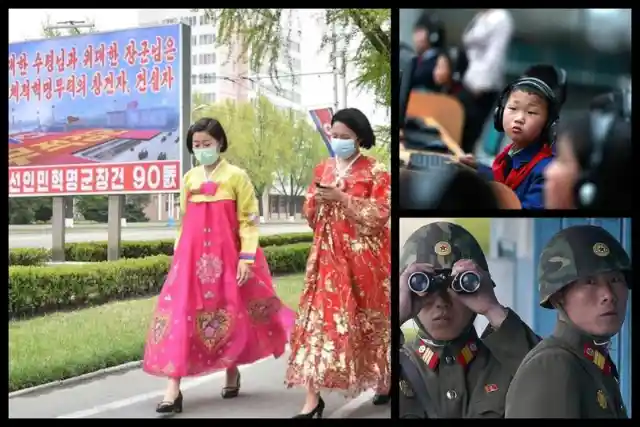
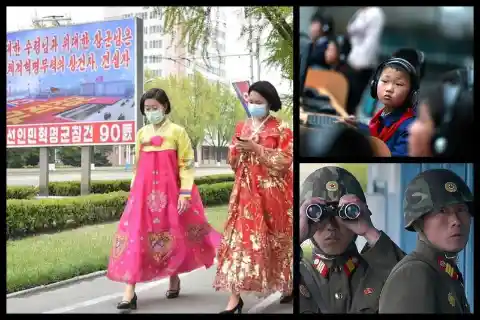
Yet, somehow, a few banned pictures have been leaked out of the highly fortified state that doesn’t even allow its own citizens access to the internet. In a country blanketed by military rule, where free movement is denied, and where all the freedoms the rest of the world enjoys are severely restricted—these pictures serve as rare windows to the hermit kingdom.
Discover some of the most fascinating photographs leaked out of North Korea!
In The Midst Of Stern Men, A Woman
Foreign visitors are rarely allowed in North Korea. Those granted permission are subjected to strict travel guidelines, usually as part of a tour group, and many places are off-limits to them. One must not also break away from an authorized tour—besides—you really wouldn’t know what to expect in a place like Nokor.
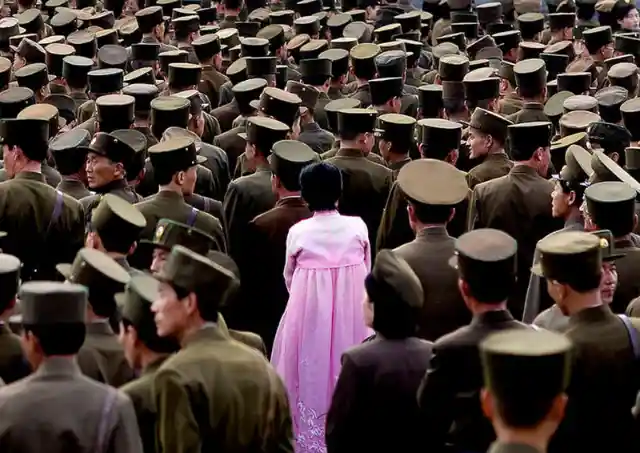
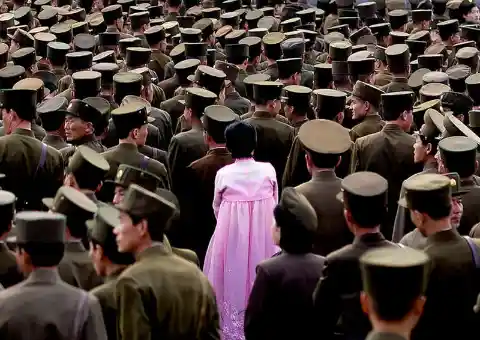
No one can explain how a photographer has taken a snapshot of members of the Korean People’s Army and lived to share this print with the world. They’ve always kept their military out of prying eyes. Here, in the midst of them, is a sole woman dressed in pink, like a mother of all men.
Systematization And Orderliness
Had this been photographed elsewhere in the world, you would not be surprised to see people swarming all over the scene. Public transportation in an underdeveloped country might be imagined to be chaotic, with people in the line bumping and bashing shoulder-to-shoulder.
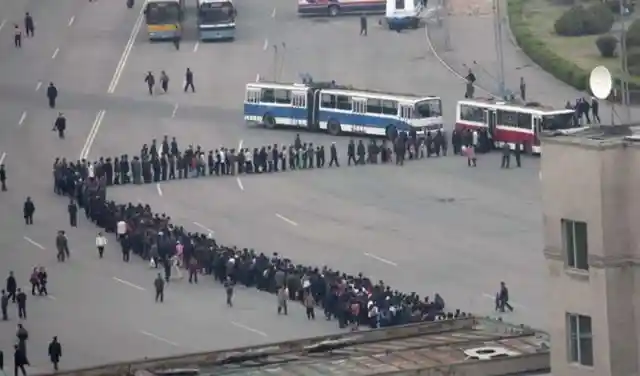
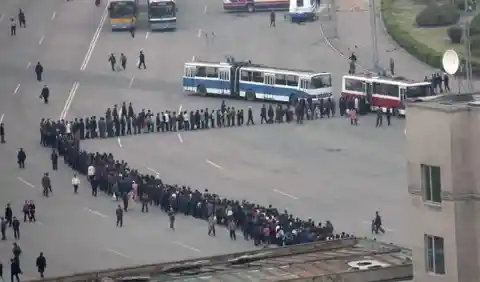
But this photograph of North Korean commuters shows strict enforcement of public regulations. People are lined up obediently like ants marching, guided by their tiny antennae, toward a place where they can find food and rest.
Publicity Photos
The photographs of North Korea that are readily available for general viewing are understandably greeted with an air of suspicion—what with the country’s long history of duplicity towards other governments, cultivated by a totalitarian dictatorship that many feel has so much to hide.
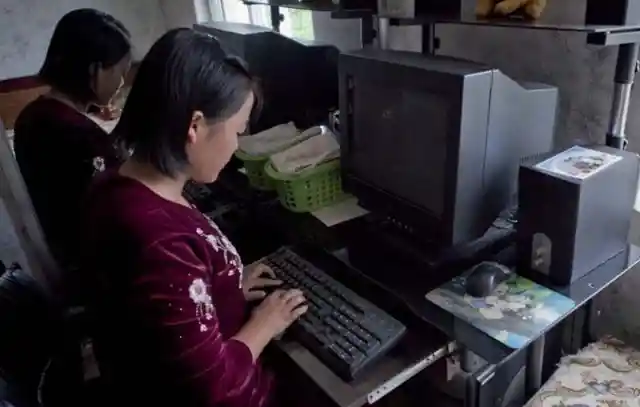
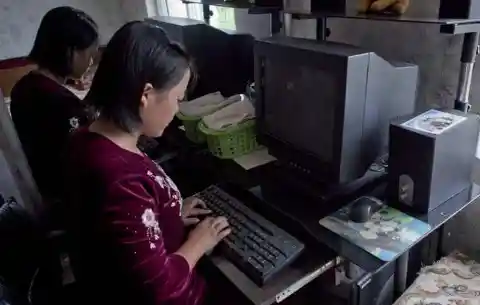
In this photograph, a North Korean teen appears to be tinkering on her personal computer, perhaps to work on her lessons for research. But reports have long shown that North Koreans are not allowed to connect to the internet. Worse, these computers aren’t powered by electricity. All you’ll see is a subtle reflection on the dark surface of the monitor.
Juveniles In The Military
For so many years, North Korean propaganda has highlighted the strength of its military forces—its Air Force, Navy, Special Operations, and Rocket Force, ready to take on the world equipped with powerful technology. “The Korean People’s Army is one of the biggest there is.”
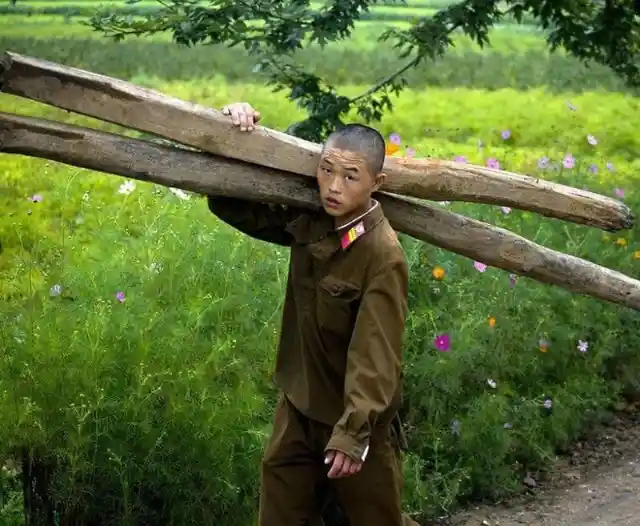
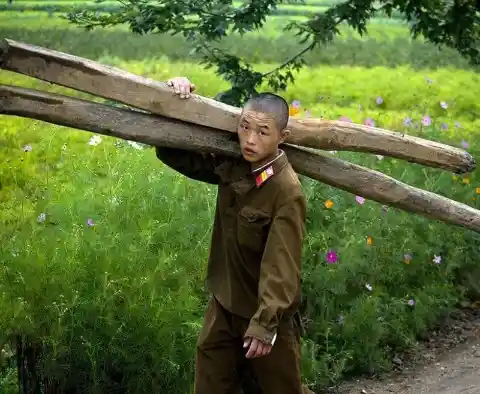
But perhaps one of the reasons they strictly prohibit the taking of photographs of their military personnel is because most of them are underage. Just boys, really, that would rather play games than march with a shouldered rifle. A boy soldier is pictured here wearing an oversized uniform, probably handed down to him, doing manual labor.
Uprooting Grass At The Park
North Korea keeps trying to paint a picture to the Western world of a country in abundance that maintains peace and order under a successful leadership that follows the Juche ideology for self-sufficiency and economic prosperity. But the photographs that are leaked out of North Korea tell a contrasting tale.
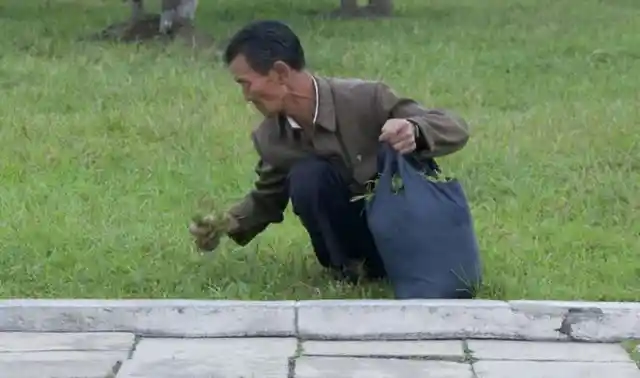
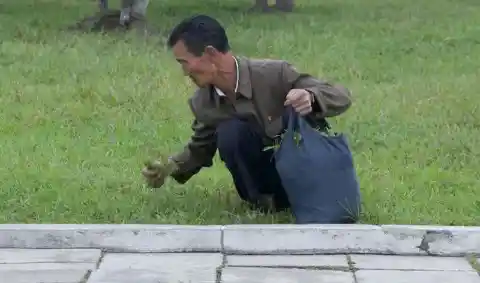
It is said that some people become so hungry that they head out to public fields and parks to root out what they can to put food on the table for their families. Some might be lucky to find a handful of vegetables. This man is either pulling up grass for feed or doing manual gardening with his hands.
Creating A New Market
True to Plato’s remark on our need for creative productivity, North Koreans had to do away with the traditional paradigm of earning a living. The country suffered a great famine following the Soviet Union’s collapse in the 1990s, which prompted people to find alternative ways to battle hunger.
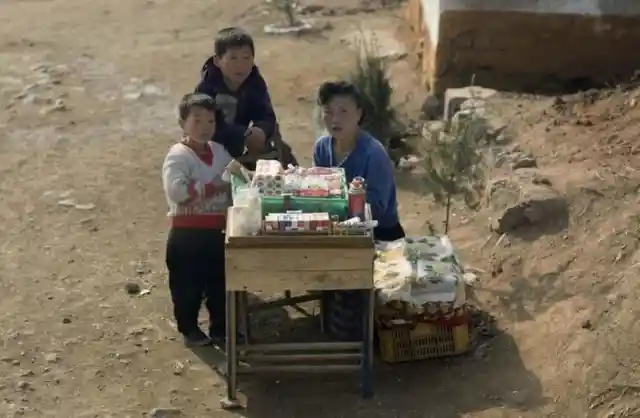
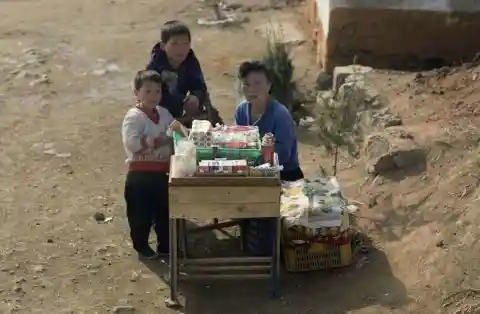
While running the risk of having their goods sequestered by the authorities, they created a new gray market that kept most of them afloat. Here is an example of the stalls they put outside to sell various goods, like cigarettes and candies, for a small profit.
The Look Of Deprivation
Nothing can be more upsetting for the North Korean government and members of the higher-ups than to have pictures of their undernourished citizens, let alone members of its military, shared with the world. Nobody wants their dirt shown back to them.

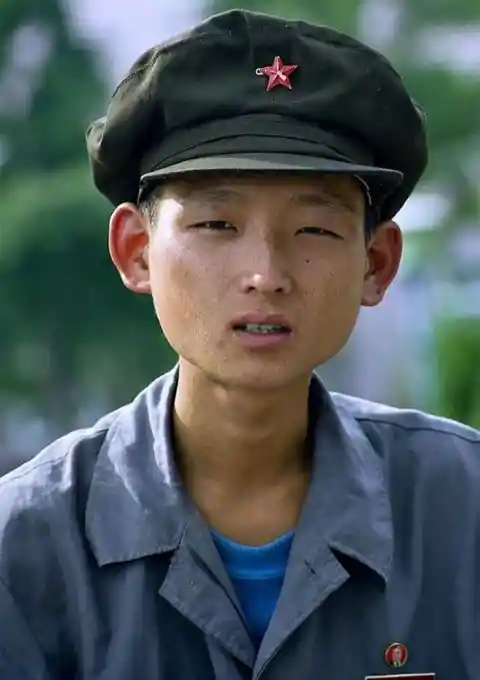
But such hardship is rampant among the ordinary people, and for years it’s been difficult for North Korea to disguise itself with a mask of success. The March of Suffering in the mid-1990s claimed millions of lives due to hunger and related illnesses.
Largely Vacant Avenues
Even during the early 2000s, the streets of North Korea were visibly lacking automobile traffic, which is commonly seen, if not unavoidable, in developed nations. This photograph was taken in the capital of Pyongyang, one of the country’s oldest cities, located close to the Yellow Sea.
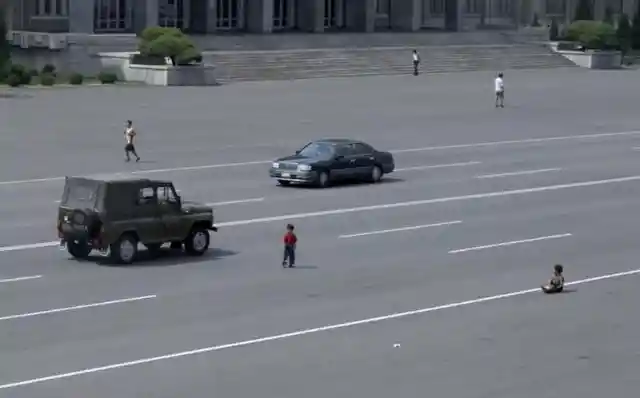

Children can be seen playing along the national road, calm in the face of passing vehicles. It’s a testament to the citizens’ still not being accustomed to seeing large numbers of cars cruising down in their area.
Candid Photograph Of Ordinary Citizens
Pyongyang wants to control everything published about the government and its people so that everything would appear perfect in toto. From stories about people earning proper wages from their desired jobs, businesses meeting monthly quotas regularly to ordinary citizens singing praises to their leader—and all that jazz.

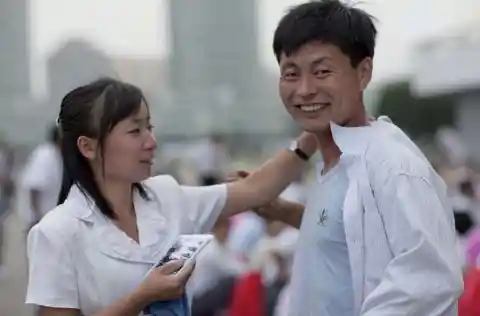
A couple prepares themselves before allowing their picture to be taken as if an omnipresent eye were monitoring, telling them to put on the brightest smiles for everyone to see how happy they were under the authoritarian rule.
What Goes On In Holes And Corners
At the end of an excursion in Kaesong, or generally, around the country’s more “popular” cities and scenic sites, the tourists are sent to their designated hotel, where they are easily monitored. Occasionally, people would want to go out on their own to witness life on the streets, but these requests are categorically rejected.
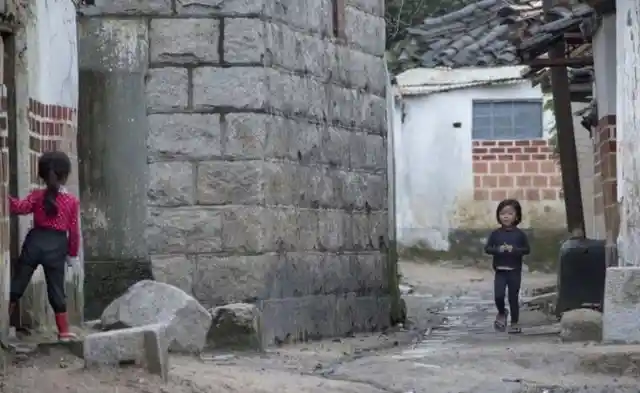
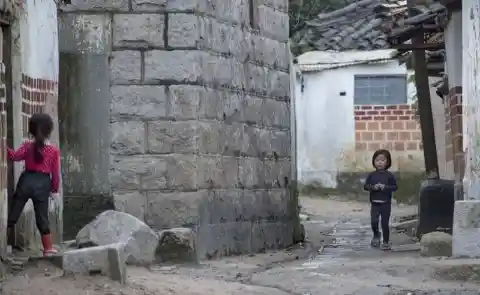
Life beyond the hotels is not as pleasant as the authorities endeavor to project it as being. People lead tough lives, and many are forced to work like animals.
Reinforced Subways
It took whoever snapped this photo of a typical day in North Korea of ordinary citizens walking in and out—up and down the subway, leading their everyday lives—a lot of courage. Apparently shot with no artistic angle or creative purpose, a great risk was taken just to show us a glimpse of its life in the metro.

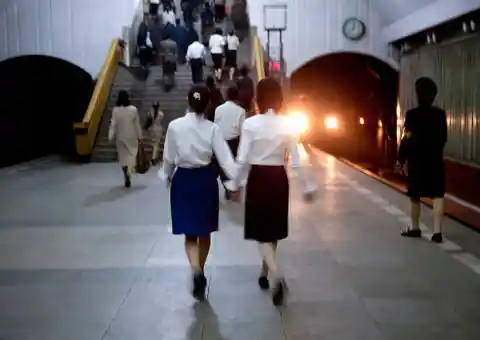
But these aren’t just regular subways. They have been heavily reinforced with steel and concrete thick enough to withstand an air raid. The network of passageways is so deep and extensive that many feel it is purposely designed for militaristic purposes—disguised as a means for mass transport.
Wayward Kid Blocks Tour Bus
The sight of children lounging on the sidewalk, making play space out of an avenue in Pyongyang in broad daylight, shocked tourists who were dearly concerned for their safety. Here another photograph surfaces showing a rebellious child dressed in military clothing obstructing a tour bus from making its way around the city of Samjiyon.
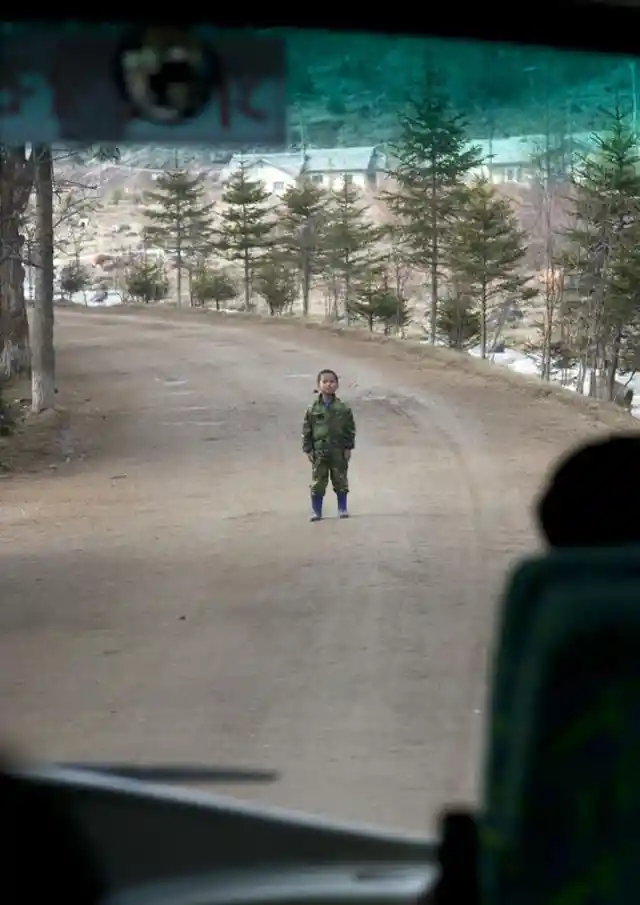

Signs of unruliness are just one of the things the authoritarian state doesn’t want its guests to witness. Luckily, a picture of this mini stand-off had already been snapped before the tour guide could even notice. It makes you wonder where the parents of these children were.
Unreliable Electrical Power
This is a photograph of an art gallery during a power outage. This is very common throughout the country. Patrons and art lovers had to make do and view various showcased works with only the aid of a flashlight and one or two portable bulbs.
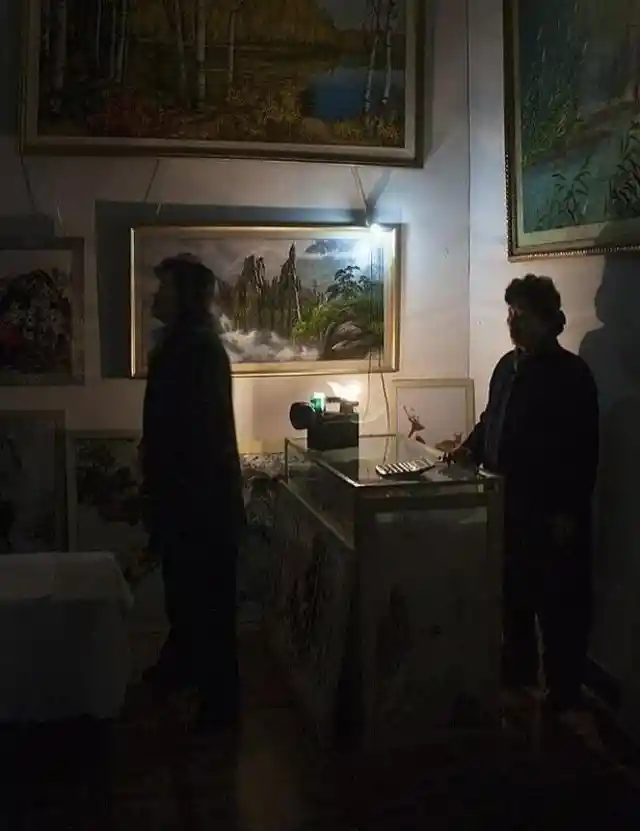
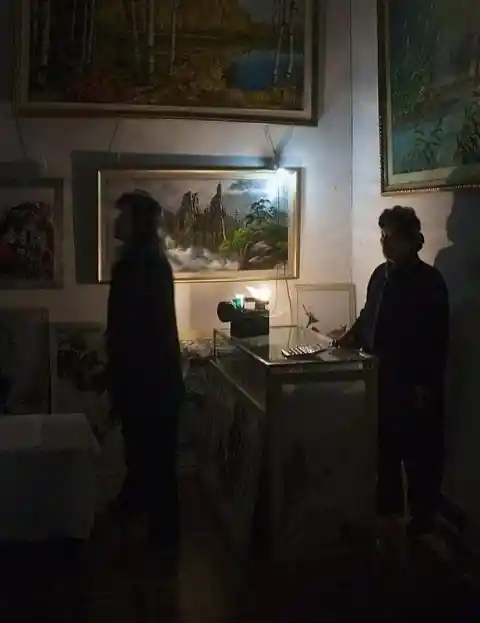
Brownouts are a regular occurrence in North Korea, and it is reported that only less than 30% of its total households have an electrical connection. Furthermore, most of them can use their electricity for a scanty two hours per day.
KPA Soldiers On A Break
The dictatorship doesn’t ban the use of cameras—but they only want them to be used on occasions that show them in an agreeable light. When they show the international community what their armed forces are made of, they want images of them marching in flawless synchronization.
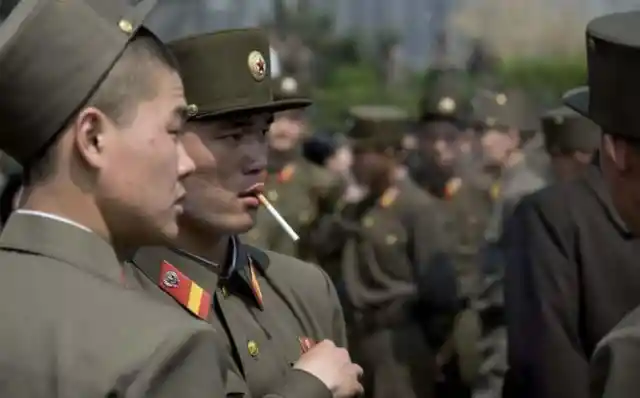

But here they are secretly snapped during one of their downtimes, jawing, smoking cigarettes. They are far from the semi-robotic, seemingly tireless, extremely loyal, and devoted soldiers depicted in state propaganda.
Fisherman Using Makeshift Tools And Equipment
A local fisherman sits obliviously atop his makeshift boat—an inflated tire interior—looking across the lake. He seems completely unaware that someone has photographed him. He would not likely recognize the device used to take the picture if shown.
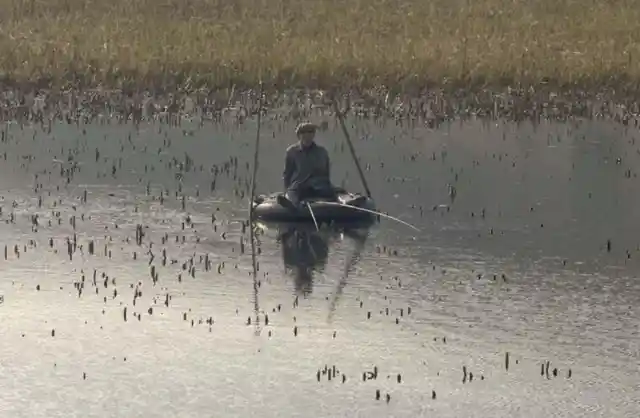
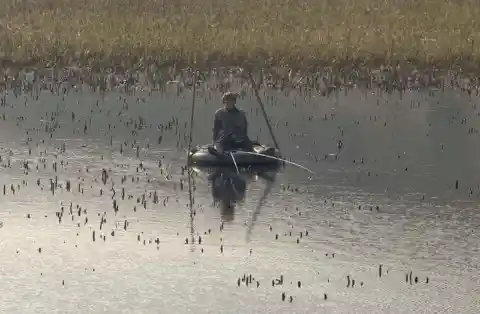
Photographs like this make us question the efficacy of the regime’s programs for its farmers and fisherfolk. Shouldn’t the lack of equipment, for one, be addressed by the government to promote the sector’s development? Is the government doing enough to elevate the welfare of its people?
Backward Youth
More than a thousand kids are sent to The Pioneers Camp of Wonsan, where they can mingle and bond during the summer. This is also a time for them to see and learn more about North Korea’s culture and other guests from authoritarian nations.
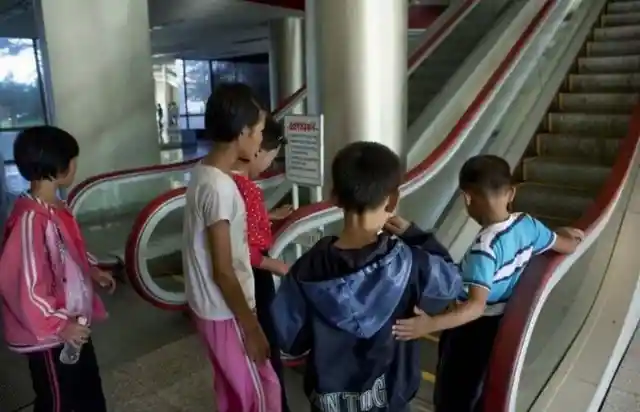

But this picture shows that some of the kids that are sent to participate in the event don’t even know how to use the escalator. Many of them have spent all their lives in the countryside farming, working to help their parents, and are largely unfamiliar with this technology.
Only The Affluent Are Allowed In Supermarkets
Pyongyang is the center of North Korea’s political institutions and the home of its ruling party, the Workers’ Party of Korea. But the true workers, the average man in the street, often find themselves discriminated against by society's well-to-do.
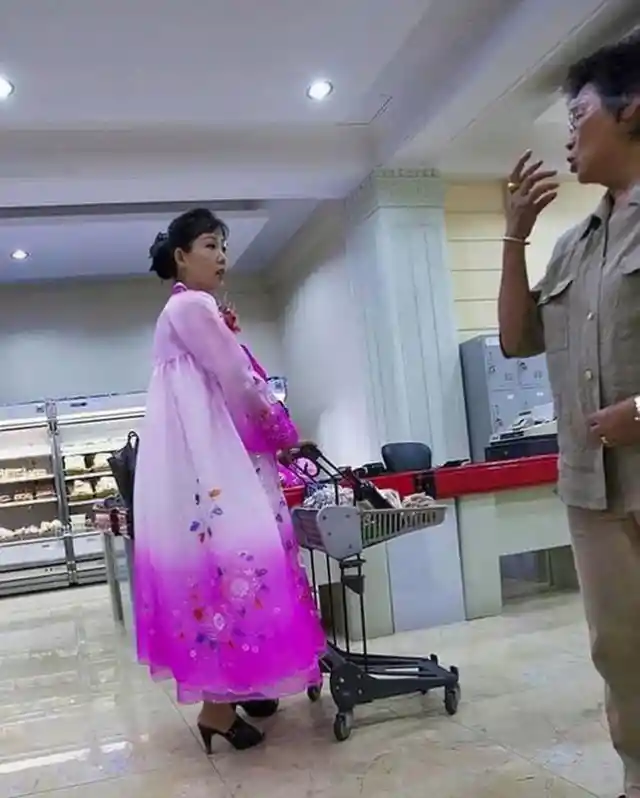
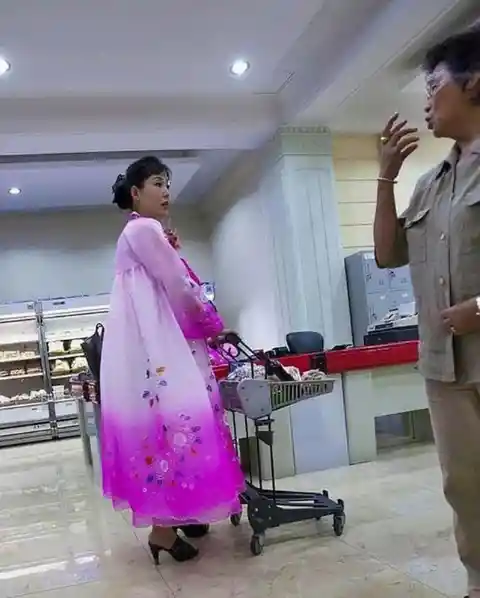
They aren’t even allowed inside Pyongyang’s two supermarkets to buy what they might need at home. These groceries are reserved only for the elite, city officials, and their families. But, of course, the regime doesn’t want the outside world to know about this.
Taking Pictures Of The DMZ
Those who are lucky enough to tour around North Korea—and there must be only a very few of them—come back home with colorful mementos and a bunch of souvenirs to remind them of their visit, but it might not include photographs as proof of their experience.
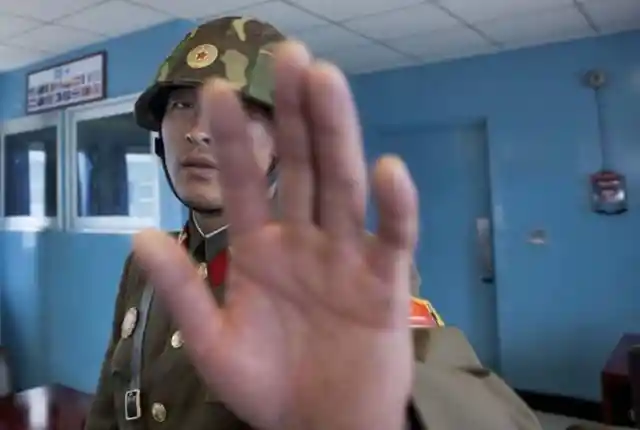
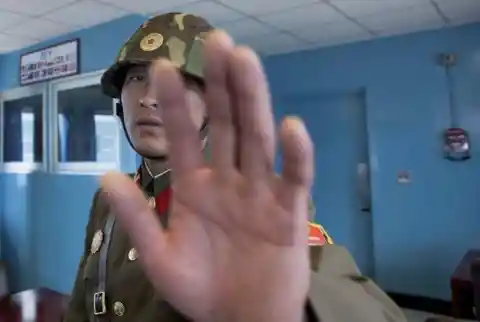
Especially so when it involves having shots taken of Korea’s soldiers, military camps, and officers. For those who want to pose with the soldiers (that’s what the country is known for), a visit to the Korean Demilitarized Zone will give them a chance.
Poverty In North Korea
North Korea takes great pride in declaring itself a nuclear state. In fact, much of its resources over the years have been spent on research, acquiring materials, and technology to develop a missile that is powerful enough to land on American shores.
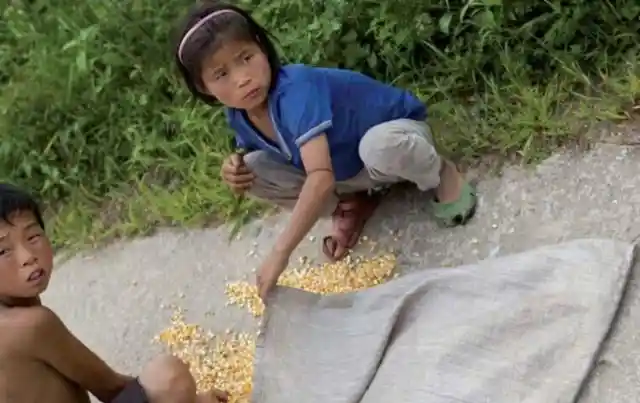

After having poised itself as a developed nation, it is quickly put to shame by pictures like this—of its own children having to scamper the fields for grain. Many of its people are dying of poverty. Its food production programs continue to fall short of its goals, favoring only its aristocracy.
Turning A Blind Eye On Its Deficiency
North Korea’s roguish bearing in the international arena has brought on itself a trade embargo spearheaded by the United States. Its selective friendship among nations restricts it from reconstruction or earning enough money to fund its national programs.
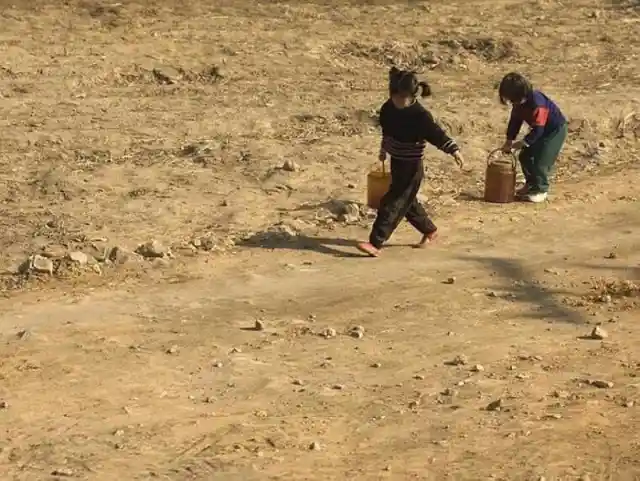
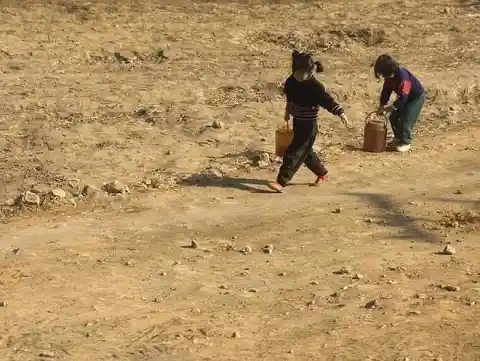
But the authoritarian regime doesn’t want to hear all about it. The country’s leaders remain stubborn in the face of their people’s hardship, keeping their noses in the air and glossing over the suffering of its people.
Never Shame An Official
Disrespecting an official may have life-changing consequences for a North Korean citizen, and there have been numerous reports of human rights violations in the country over the years to people who have supposedly transgressed various laws—proven guilty or otherwise.
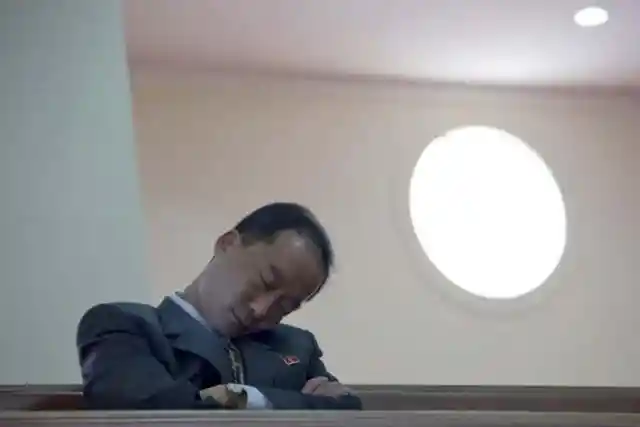
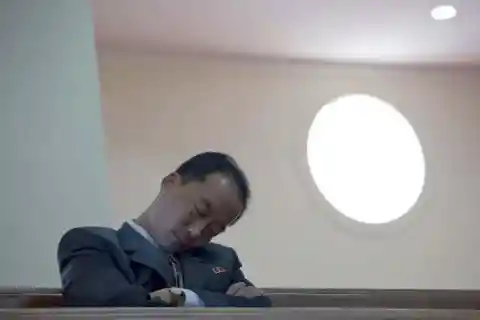
Such is the loyalty and devotion demanded by the totalitarian regime from its citizens. Being an extension of the government and in the way of the Kim family’s rule, placing authority in a bad light could result in an offender getting a one-way ticket to prison or a labor camp.
Citizens Go Out To Celebrate Kimjongilia Festival
Since Kim Il-Sung rose to power in 1948, the North Korean government has been accused of establishing a cult of personality around the Kim family, even referring to Kim Il-Sung and Kim Jong-Il as its eternal leaders. A red flower similar to roses called Kimjongilia is named after Kim Jong-Il, while Kimilsungia is named after Kim Il Sung.
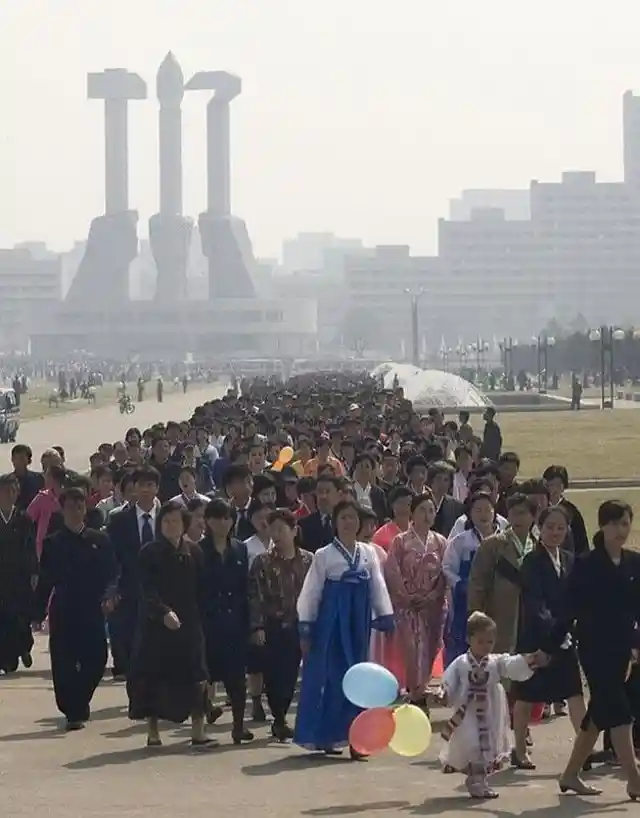
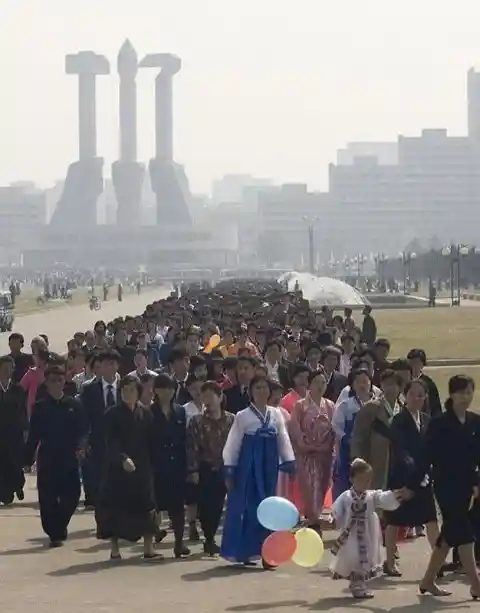
North Koreans march to a museum in Pyongyang to celebrate the Kimjongilia Festival (flower festival), one of the major activities held in the capital celebrating their leader’s birthday. They are pictured here walking, dressed in their best clothing, as an exhibition of the good life in Korea.
Public Performances Must Be Spotless
These are performers at the Pyongyang Circus, home of North Korea’s top acrobats, synchronized swimmers, and other forms of entertainment like animal exhibition shows. Guests are often invited to watch various programs in Pyongyang, and, as expected, the training of their entertainers is rigorous. Everything must be executed to perfection—to reflect their nationalistic ideals.
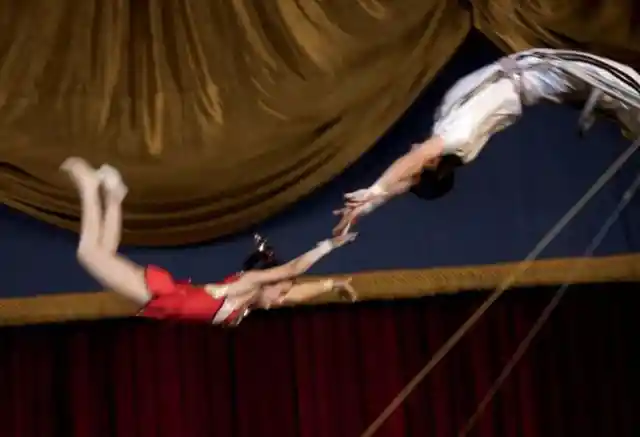
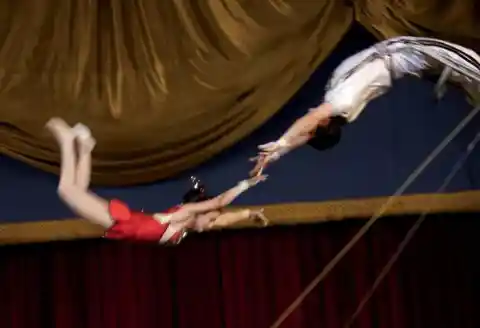
Just like the many athletes that are sent to represent the country in international competitions, these public performances must show how wonderful North Korea’s regime is. Subpar performers are duly punished and subjected to public shaming.
Decrepit Buildings
In Pyongyang, North Korea’s capital, also known as the Capital of the Revolution, a tourist snaps a picture of a seemingly clean and well-maintained building that’s actually too old and about to crumble on the inside. Had the guests freely taken photos of the place, they might show how many buildings like this: pristine from afar but in a state of decay up close.
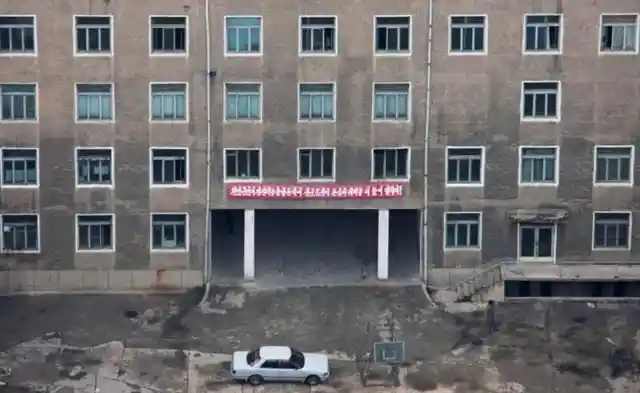
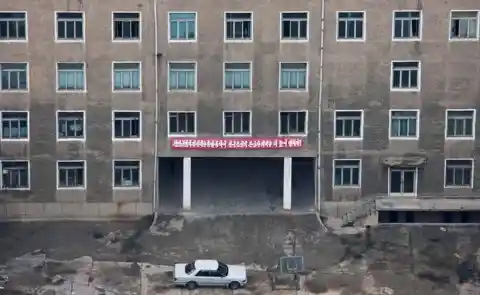
The city was designed to boost the national spirit after the Korean War. Authorities would like onlookers to maintain a distance while appreciating its landmarks, social life, and culture. They wouldn’t want the world to know about the gritty details that become too real when viewed intimately.
Inadequate Water Supply
Citizens with certain connections in the government and other high-up places are able to live in apartments and houses in the metropolis where essential services are relatively better than living in the countryside. Despite having these advantages, a guest of one of the residences was shocked and took a photograph of their bathroom.
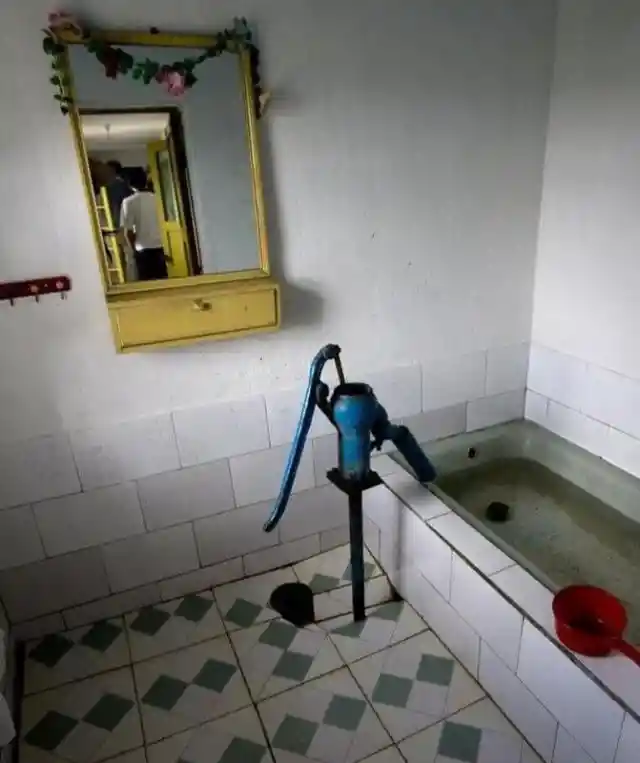
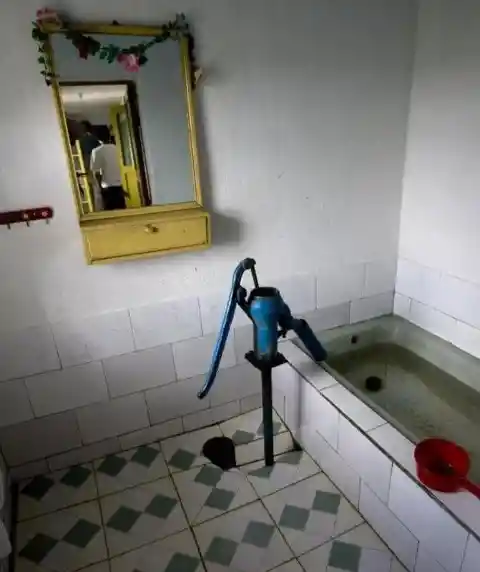
Since the supply of drinking water is inadequate, with only about 60% of the population having access to the service, the rest use their bathtubs for storage, either from pumps or by funneling rainwater. There are no heaters—but what good would it do them with only two hours of electricity rationed each day anyway?
Poor Construction Safety Standards
In a generic corner of one of North Korea’s cities, a group of men dressed in casual clothing—quite possibly walking to and fro in flip flops, nodding at each other as they converse with no safety helmets or glasses on—are captured on camera. Whoever shared it, if found out, will likely be banned from entering the state ever again.
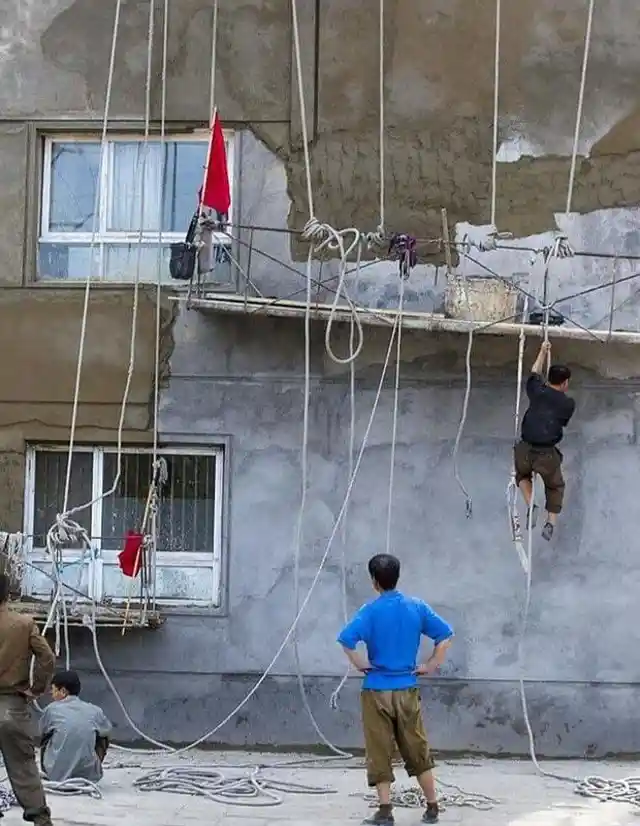
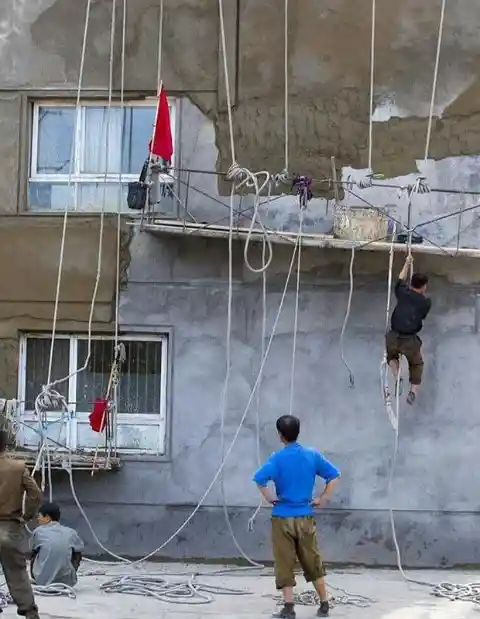
But what seems to be an ongoing circus, with a man suspended up in the air, is the norm for construction workers all over the country. The workers’ safety is not a priority here, as this could be costly for the state to uphold or implement.
Taking Pictures of Kim IL Sung Statue Is Prohibited
People can’t just walk up close to the Kim IL Sung statue located on Mansu Hill and spontaneously take pictures of the 22-meter-tall bronze figure—or a selfie with it behind them. While tourists in Western nations always do that in their own historical monuments, the state wants to fully control what people do in their domain.
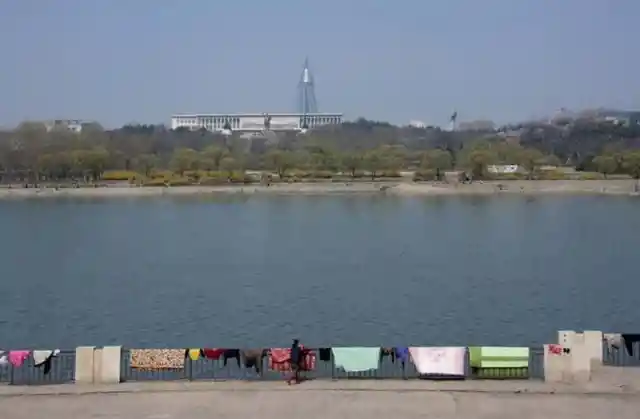
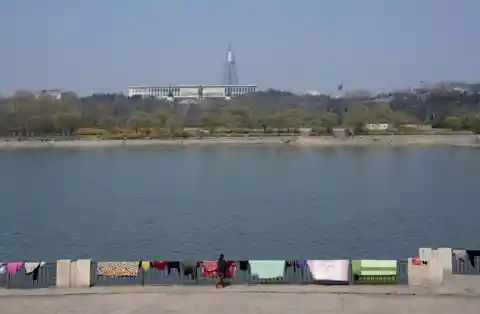
The statue of their revered leader can barely be seen from across the Taedong River. It is a mere bulge on the line of treetops. Cameras could be confiscated because of unwarranted pictures like this.
Unflattering Snaps
While this might seem to be an innocuous picture, a run-of-the-mill, of everyday life in North Korea, authorities would have demanded it to be deleted had they known of this unauthorized shot. That’s because the photo, as interesting as it may be, implies adverse circumstances for the populace.
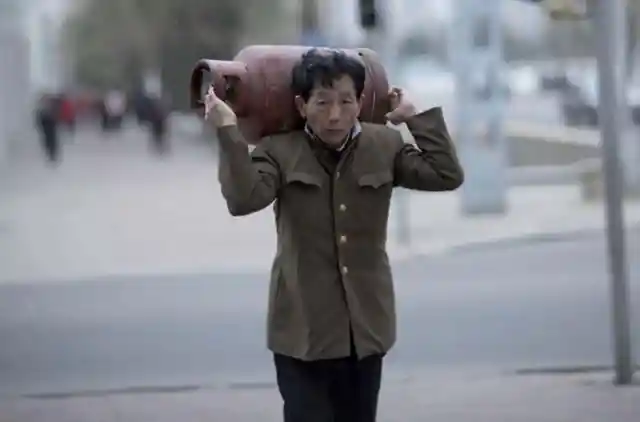
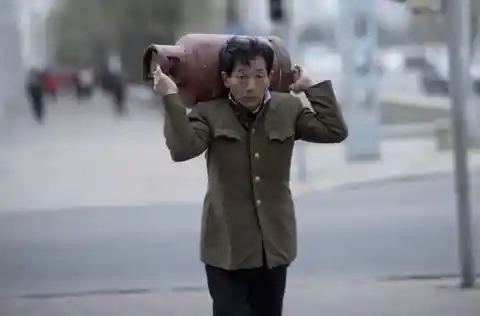
They are trying to project to the world that life is good, that the nation is progressive, and that its citizens benefit from state programs and its independent political ideology. This picture would simply contradict that tale.
Restrictions on Domestic Travel
While the internet is constantly flooded with multimedia of people from all over the world sharing their wanderlust experiences, selfies of adventures in remote islands, and vlogs about parachute jumping adventures, North Korean life has to remain as staid and predictable as possible.
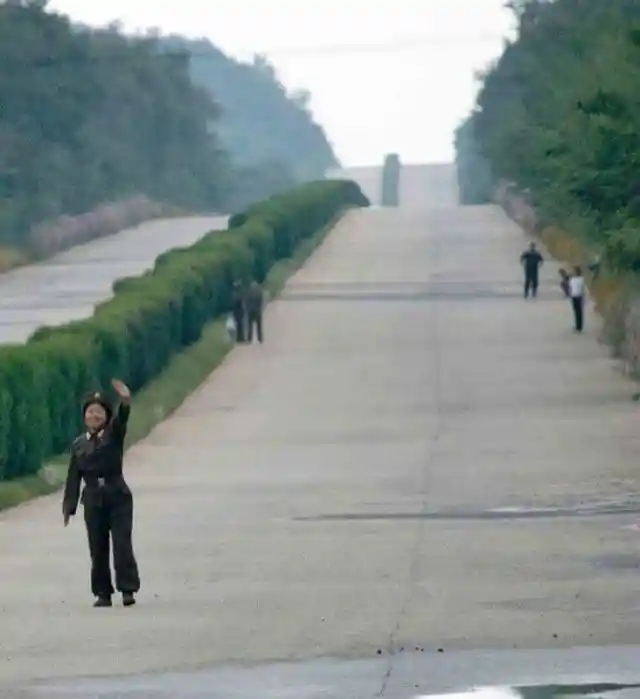

The state doesn’t want its people going from one place to the next just to satisfy a whim. Domestic travel is largely restricted there, save for a few occasions that need prior approval. Here is a picture of a few soldiers traveling individually, hoping to hitchhike. Only a minority of its people can afford to acquire automobiles.
A Tired Soldier
A member of the Korean People’s Army, one of the largest ground forces in the world—and definitely one of the most intimidating—must have broken away from his squad members to snatch a few precious minutes of rest by an embankment.
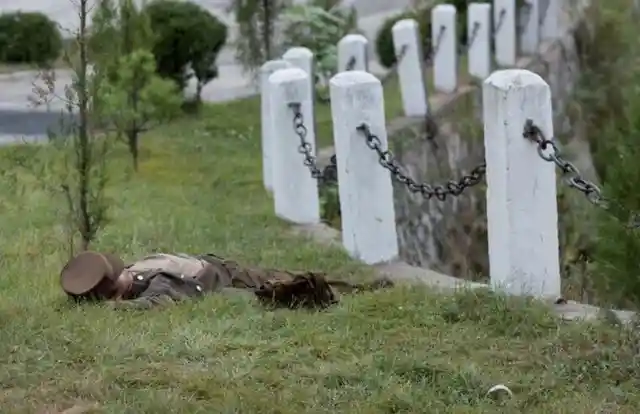
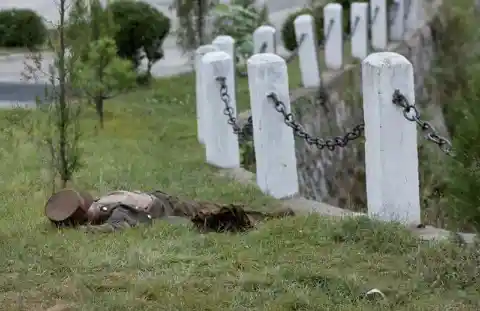
This picture cannot be shared in North Korea without creating quite a stir among the ranks—for fear of punishment from their higher-ups. They wouldn’t want people to see soldiers slacking off, much less in their Class A uniform, looking dead-tired and vulnerable.
Riled-Up Painter
Unlike in most countries, ordinary North Koreans you would meet on the streets and public parks aren’t as amiable. You couldn’t say that they are inhospitable, either. They just go on with their daily lives in this monotonous, flat-as-pancake way, almost collectively unique to them.
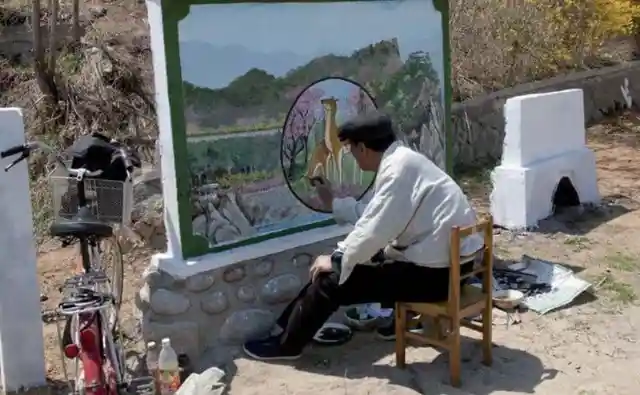
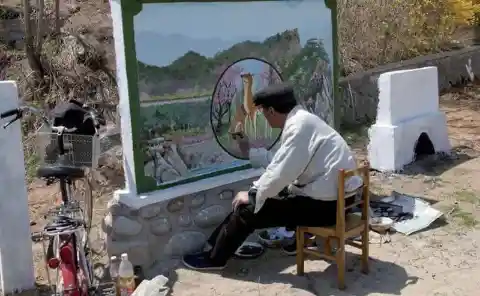
But a photographer caught the ire of this artist who didn’t want a picture taken of his unfinished work. He felt intruded into and grumbled to his face and demanded to be left alone, at least until the painting was done. That’s the only time that one’s work can be shared, he said, with a perfectionist mentality when it comes to an outside show.
Spooked By A Camera Flash
A group of tourists returning from a sojourn to the countryside was told to take an alternative route back to their hotel. Apparently, there were road constructions ongoing that weren’t there when they started their day that morning, and they were glad to follow the long way around to experience North Korea more thoroughly.
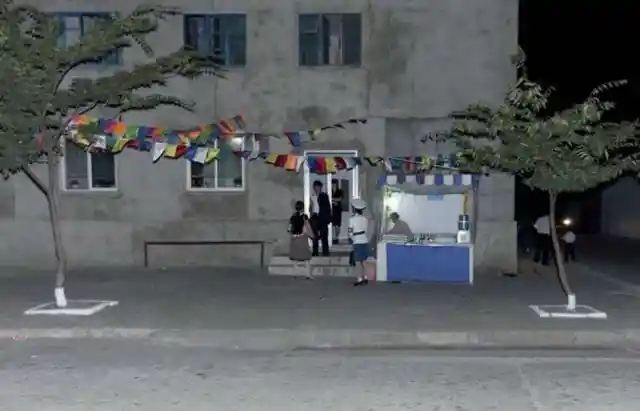

But they were told not to take pictures of the people there, where the streets and tenements close by were not so well lit—as if they were animals in the wild that the flashes of their cameras would spook. One of the tourists managed to snap one photo of a section of that area.
Exclusive Restaurants For The Rich
All trips around North Korea are pre-approved and must be minded by an official tour guide. As such, tourists can expect to visit many of the country’s historical sites, such as monuments and museums, where a few short lectures about their culture and traditions are to follow.
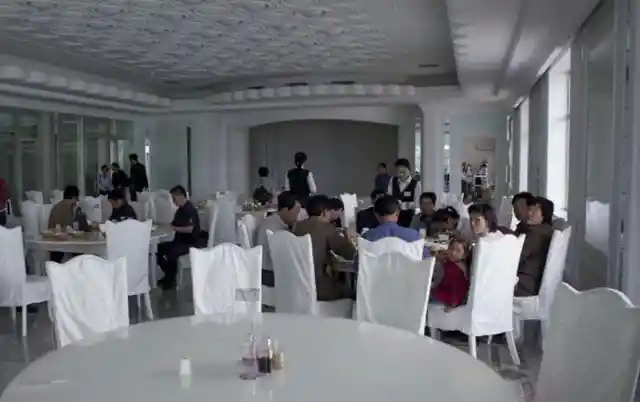
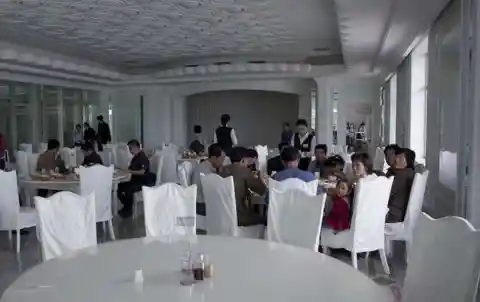
But when in Pyongyang, they are shown around the scenic Taedong River that runs through it—where popular restaurants are established close to its banks and where some new ones sprout. Unfortunately, these places cater exclusively to the rich or those in authority—the two being quite synonymous.
Busted Transportation
When a transit bus breaks down in the middle of the road, the next scheduled bus would have to be sent out ahead of its schedule to pick up its stuck passengers to take them to their destination. But in this case, they are all forced to throw their weight and push it, hoping it would jump-start the engine.
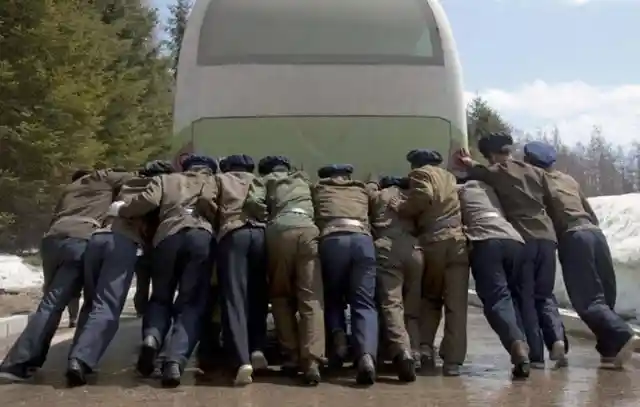
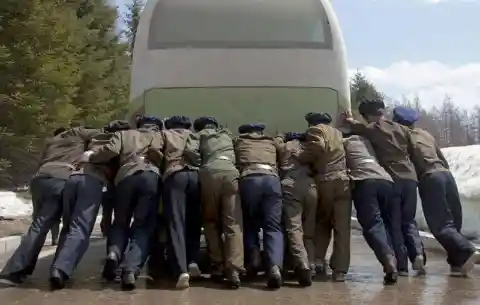
This photo implies that the state’s transportation system is unreliable, if not that the buses they use are old and beat up. If this picture had been taken from an aerial point of view, it would have also shown us the country’s poorly maintained roads.
A Worker Takes A Break
The communist state would want you to believe that their citizens are well taken care of, that their workers are given generous benefits, and supplied with the best equipment with which to operate. Moreover, when they retire, a solid compensation package awaits so that they will never have to worry about their financial stability throughout their old age.
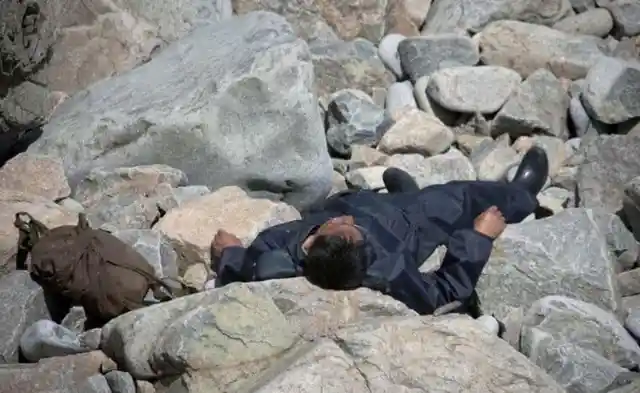
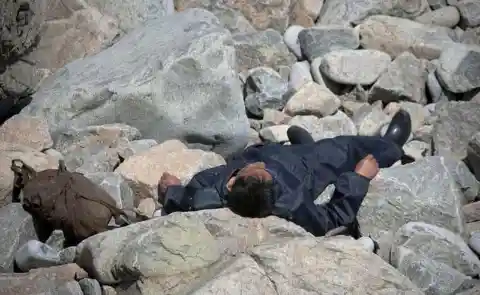
But all those things are quickly dispelled when a middle-aged man in coveralls is seen taking a break from work, lying down like he were too used to it, on a bed of jagged rocks. He doesn't mind the discomfort. It makes us wonder about their safety standards, employment security, and all the other good things they claim to have there.
Homelessness In DPRK
One of the ideals of socialism is that people ought to be treated equally, and all the basic necessities of life should be provided for by the government or otherwise. But here, a photographer took pictures of two of the many people that seem to sleep in public parks.
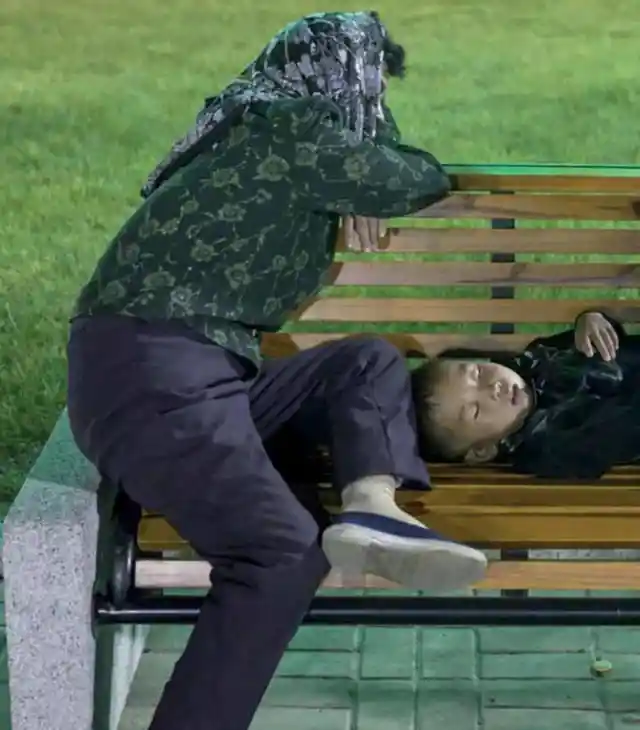
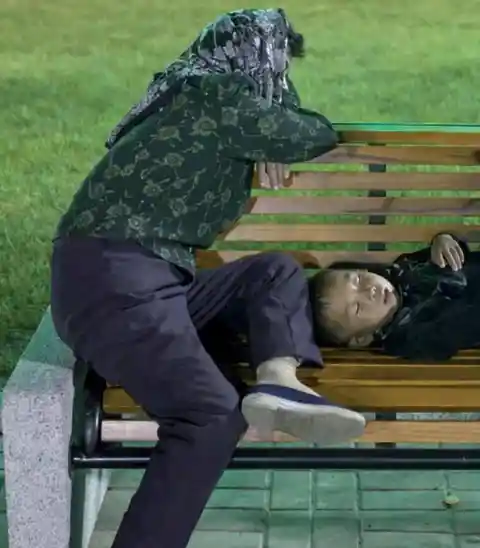
These people can be seen out of nowhere by the train tracks and below bridges, and tour guides vehemently deny that they are part of the growing homelessness in the country. Is this an equal society, as it claims to be?
A Wayside Rest
Those lucky enough to be granted permission to travel to North Korea attest to the country’s many contrasts. Some visitors may have had their expectations raised too high beforehand by its propaganda—but the reality on the ground tells a different story.
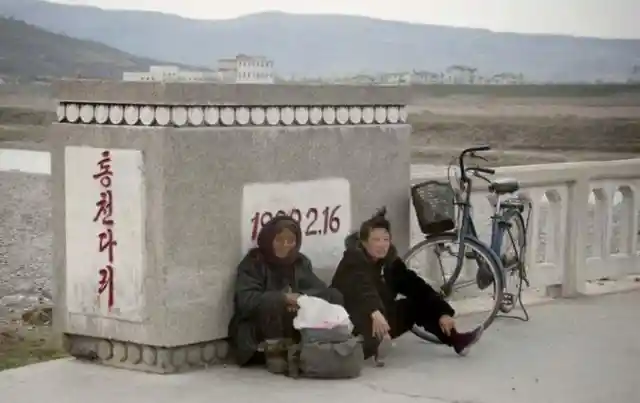
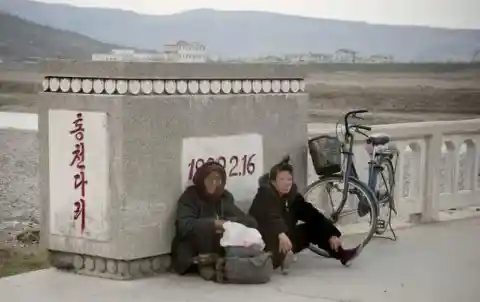
The picture of these two women sitting roadside exudes an atmosphere of hard knocks. One of them must be among the country’s workers who generally go to and fro the workplace on a bike. The majority of the workers there cannot afford to buy a car, and the country’s public transportation is in shambles—convenience will have to take a back seat out of necessity.
Improper Appearance and Posture
From Pyongyang’s point of view, this isn’t just a typical easygoing photograph that, in a Western world setting, would likely end up posted on a social media platform competing for the most number of “likes” or reactions.

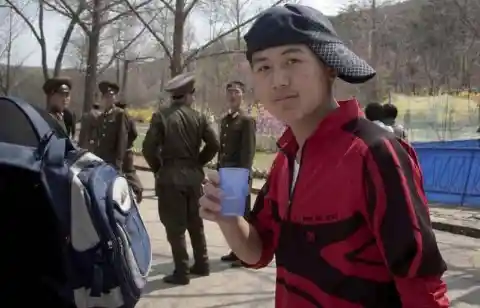
They don’t like people dressing up with a strong sense of individualism—the way the cap is worn, the flashy get-up, the relaxed posture—invite too much attention. To them, uniformity is synonymous with equality.
Banned Picture of Children Forced Into Labor
At this hour, when the voices of children in classrooms are overheard outside school campuses in western countries, their counterparts in the authoritarian state are silently working in the fields. They can be seen, as in this picture, being forced to do an adult’s job.

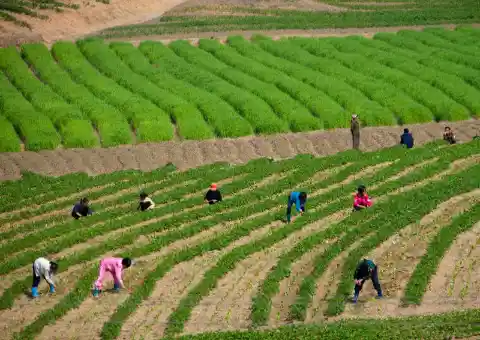
The school system serves as a way of channeling these children to various workplaces to provide additional support to their regular workforce. Here they are seen weeding and planting as part of their supposed educational learning, which disguises child labor.
A Sullied Image of Kim IL Sung
If reproductions of North Korea’s beloved leaders Kim IL Sung or Kim Jung IL, are to be made, professional photographers will need permission to capture them. In any case, they will have strict guidelines as imposed by the state.
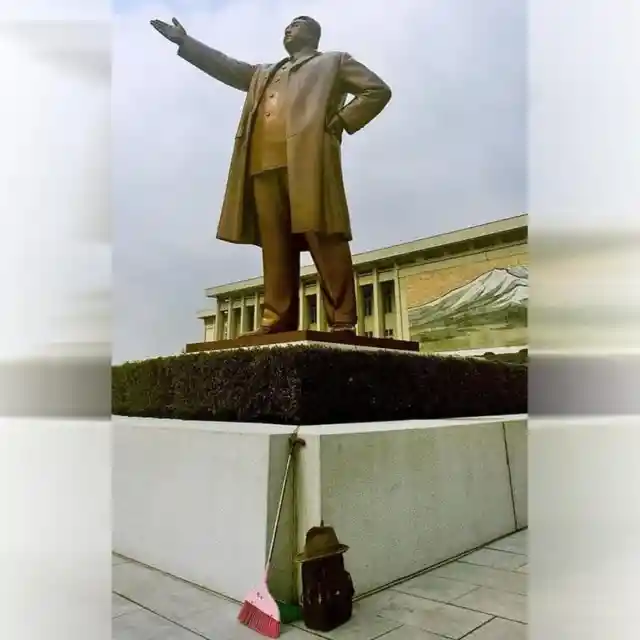
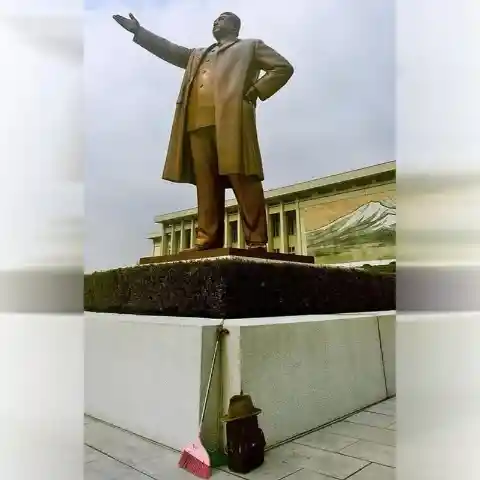
Pictures of the statues on Mansu Hill must reflect the leaders’ glory and greatness, as they are revered like gods by their people. No part of the statue must be cropped, for one, and needless to say, a janitor’s broom and dustpan and such appurtenances must not be allowed to soil this majesty.